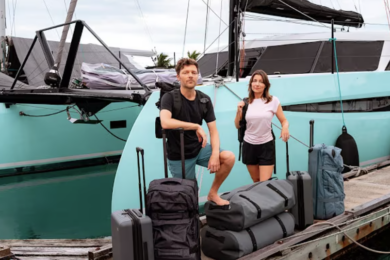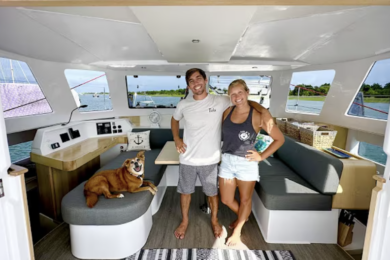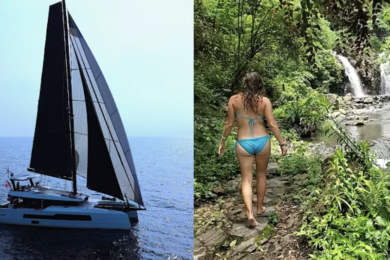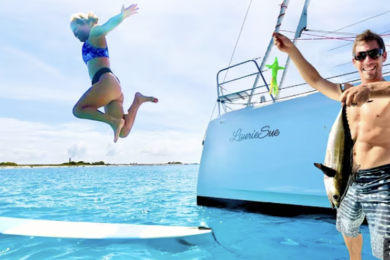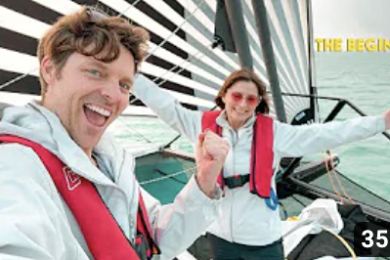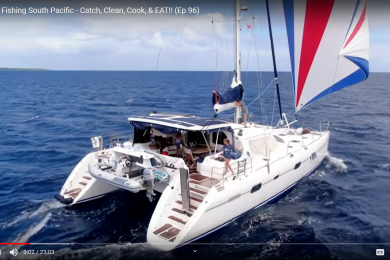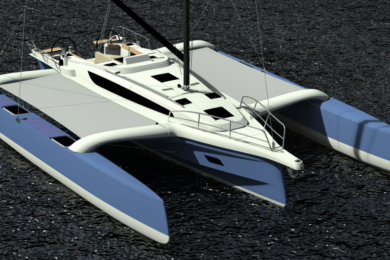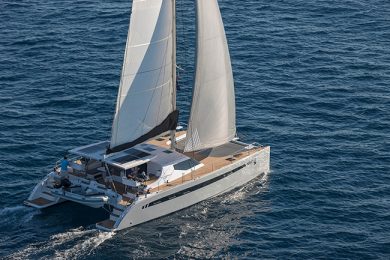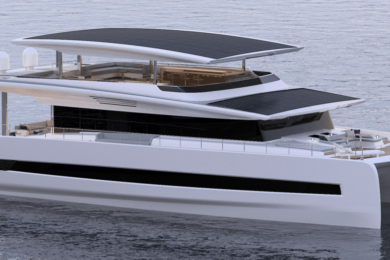As North Americans, most of us have one thing in common—we have to watch what we eat to control our weight. It’s just the healthy thing to do. And anyone who has flown coach lately can attest that the battle is often a losing one.
It’s the same thing with our multihulls, particularly the cruising variety. While there are plenty of reasons to sail a multihull, one of the biggest attractions is that multihulls can and often do sail faster than their cruising monohull cousins. Speed is a big part of the deal, or at least it can and should be.
But therein lies the doughnut. Cruisers like stuff—watermakers, gensets, battery banks, kayaks, wine cellars, and so on. We all want to carry a lot of fuel and water and know it is prudent to have spare anchors and rodes. We consume marine electronics, hardware and gear as though they were bacon-wrapped scallops at an all-you-can-eat buffet. And every spring and fall we go back for more.
The upshot is that a cruising cat can get a bit overweight. As it sinks lower in the water, its ability to sprint past monohulls wanes a bit until the inherent multihull design advantage is lost. The sailing performance from staying trim and fit has been lost to belt-loosening binges at the chandlery.But it doesn’t have to be this way. I can hear Richard Simmons now: You can do it! When we choose a multihull, it is only right to ensure that it sails as well as possible—both for the pure pleasure of it and for the safety factor provided by fast passages.
So here’s the multihull diet: Instead of adding a genset, use solar panels and wind gens to keep the batteries topped up. Because you’ll have constant battery charging, you won’t need to add a massive battery bank. You really don’t need a dishwasher, trash compactor, washer-dryer or 60-inch flat screen TV. But you may opt for a watermaker so you don’t have to carry tons of water. Anchors are important, but you can choose lightweight designs that can be disassembled for stowing like the Fortress and Spade. Instead of an all-chain-rode, you can use 20 feet of chain on a springy nylon rode. For your water toys, check out the cool new generation of inflatable paddleboards and kayaks that weigh next to nothing. And when you select a dinghy, think about weight as well as performance; consider aluminum-floor RIBs and Torquedo outboards as lightweight, energy-efficient alternatives.
Keeping trim and fit is important for a healthy life. And, it will make staying that way even more fun if you can sail your fit and trim multihull right past the others in your fleet, leaving the monohulls well and truly in your wake.

